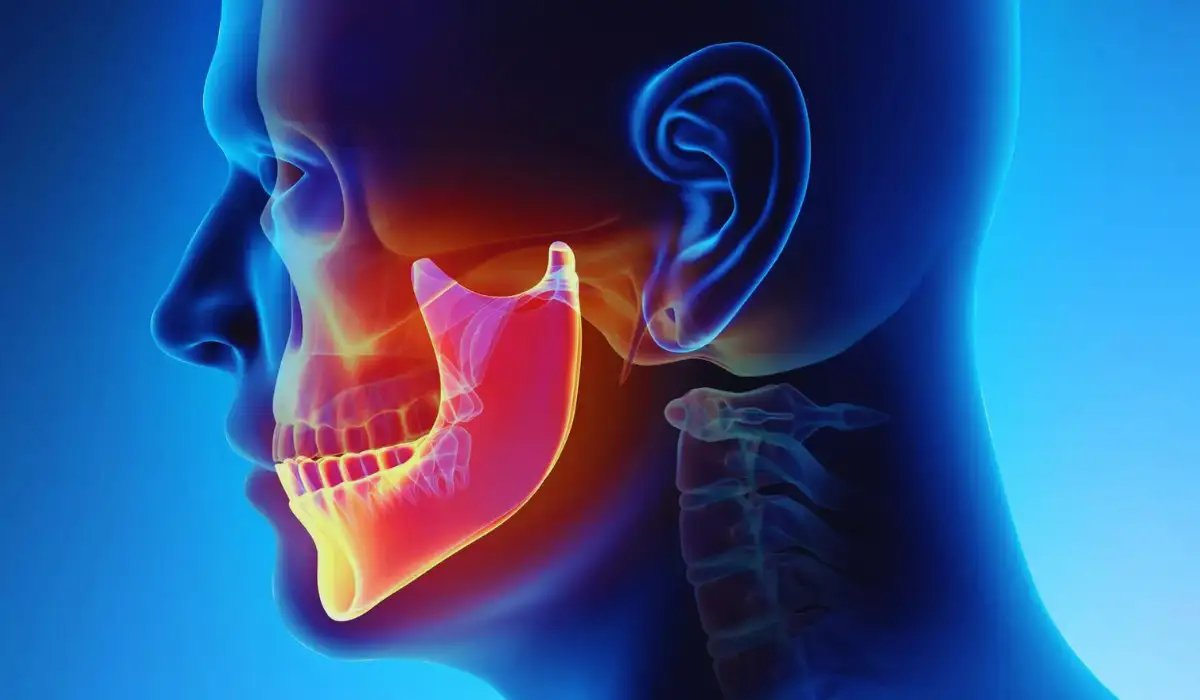People with Temporomandibular joint (TMJ) disorders suffer a lot and they can greatly affect the quality of their life. Fortunately, recent developments in medical science have resulted in numerous beneficial treatments for TMJ symptoms.
In this comprehensive study, we shall explore the factors that contribute to TMJ disorders as well as their signs and modern-day treatment options.
What is TMJ Disorder?

The Temporomandibular joint is a sophisticated mechanical element that connects the jawbone to the head.
Several factors may cause TMJ disorders such as trauma and jaw injury arthritis or chronic teeth grinding. Many symptoms are common which include pain in the jaw and chewing difficulty accompanied by a click or pop sound while making mouth opening movements.
Three main categories Of TMJ disorder
- Myofascial pain: Myofascial pain can thus be defined as arousal that occurs within the muscles responsible for jaw motion
- Internal derangement disorders: internal derangement is another term used to describe the dislocation or displacement of discs in the joint.
- Degenerative joint disease: Degenerative joint disease is also referred to as deformity of the joint itself and is often accompanied by arthritis.
Diagnosis Of TMJ Disorder
The majority of TMJ treatment relies on the accuracy of diagnosis. Once a healthcare professional with the help of imaging techniques like X-rays or MRI scans undertakes an in-depth evaluation that will lead to diagnosis and quantification of TMJ disorder severity.
It may also involve the patient’s medical history evaluation, physical examination of a person, and jaw movement as well as function.
Non-Invasive Treatments For TMJ Disorder
- Lifestyle Modifications: The simplest lifestyle changes may be important in managing TMJ symptoms.
- The patients are recommended to not consume hard or chewy foods, use stress-reducing methods, and keep their posture normal so that the pressure put on the jaw joint can be reduced.
- Physical Therapy: Jaw function can be improved by performing mouth exercises and attaining physical therapy but rather it narrows down to reduce the muscle tension as well such oral health is enhanced.
- Patients could be physically directed in exercises that would release and strengthen jaw muscles allowing better joint movement.
- Medications: Prescription of pain relievers anti-inflammatories and muscle relaxants is made to treat the symptoms such as pain inflammation which are combined with TMJ disorders.
- These drugs are administered as an adjunct to the main treatment protocol and are aimed at relieving symptoms.
Invasive Treatments for TMJ Disorder
- Occlusal Splints or Mouthguards: The specific devices made for such purposes referred to as bite splints or night guards are manufactured to fight bruxism and muscle clenching.
- Occlusal splints act as padded interim support by placing the upper and lower teeth under more favorable conditions regarding the temporomandibular joint impact of these habits.
- Dental Procedures: Dental procedures that would help the patient with correcting the bite and putting less pressure on TMJ may also be suggested.
- TMJ disorders may be attributed to bite problems that can be corrected with orthodontic treatment using braces and other appliances. Moreover, dental contouring or realigning procedures can be taken into consideration to perfect jaw functionality.
- Injections: In certain instances, healthcare professionals may inject corticosteroids into the temporomandibular joint to reduce pain and inflammation.
- These particular injections are reserved to be used when other more conservative measures have failed offering pain relief only for selected joint symptoms.
Surgical Interventions
In more severe instances where non-surgical approaches do not provide adequate relief surgery may be discussed.
The type of surgery to be performed depends on the TMJ condition and its underlying pathogenesis.
- Arthrocentesis: A minimally invasive therapy involving the insertion of needles in joint space used for irrigation and to clear debris offering relief from some symptoms associated with TMJ.
- Arthroscopy: Using a small camera and tools inserted through tiny cuts, arthroscopy can be used for both diagnosing and evaluating joints as well as undertaking surgery within the joint.
- Open-Joint Surgery: For more severe degeneration or structural abnormalities open-joint surgery is often the only option to address deeper underlying issues leading to improved function of a joint.
Emerging Therapies For TMJ Disorder
The more researchers and clinicians learn about TMJ disorders the harder they are to find alternatives that can be introduced in such cases.
From these regenerative medicine is likely to be effective in facilitating the healing and recovery of tissue around the temporomandibular joint.
This method utilizes growth factors PRP or stem cells to promote the healing process and strengthen the integrity of the tissue.
In this context, the use of regenerative therapies for TMJ therapy is a tantalizing wilderness. Preliminary studies indicate that such approaches can help restore damaged cartilage, reduce inflammation, and enhance overall joint health.
Although a novel field in terms of research activities, regenerative medicine provides promise for patients with TMJ disorders who are also looking for alternative and revolutionary therapies.
Beyond the field of regenerative medicine, the biofeedback technique is recognized as a non-invasive method that allows remote control over TMJ symptom management.
By facilitating greater consciousness and control of paraspinal muscle tension biofeedback may help individuals achieve a degree of symptom relief and to increase the amount with which they are able or their jaw muscles work.
These methods include the implementation of electronic monitoring to allow individuals time to get information on a muscle-group activity and how one can release it so as to lessen tension in TMJ.
Conclusion
In short, as people deal with the challenges that come with TMJ disorders knowledge about these conditions and treatment options becomes more important.
Early detection and individualized treatment which usually includes mixed interventions based on non-invasive but invasive procedures and emerging therapies can significantly enhance the quality of life for TMJ affected patients.
In case you think that’s a TMJ disorder then meeting with the healthcare professional is paramount to receive an appropriate diagnosis as well as treatment.
Over the past few decades medical science has shown much improvement in TMJ treatment; thus providing a new sense of hope for such patients.
Reference
- National Library of Medicine (U.S.). Temporomandibular Joint Dysfunction (https://medlineplus.gov/temporomandibularjointdysfunction.html)

